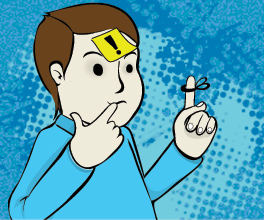Note-taking tips
Note-taking helps you remember what you've read. In fact, a good set of notes can be the foundation for your assignment. Use the tips below to help you get started.
As a general rule it's best to:
- read the text first to get the gist of it, then start taking notes on the second read
- only record information that relates to your assignment question
- use headings in your notes, so they're easier to skim through later
- use dot points instead of full sentences and keep them short – one or two sentences is fine
- use abbreviations or your own symbols for common words.
When you're taking notes:
- summarise sections of the text in a few dot points, without looking at the text
- note important dates, events, people and places and copy the spelling correctly
- collect quotes to use later
- record the bibliographical details of all the references you use in your notes
- look up any words you don't understand and record definitions in your notes.


Your own ideas are important, so record them in your notes along with the information from your resources.


Additional resources






